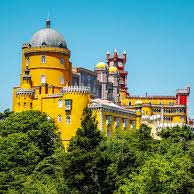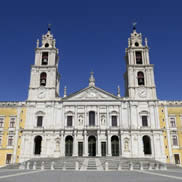The Main Tourist Attractions of Sintra, Portugal
Nestled in the foothills of the Sintra Mountains, just 30 kilometers from Lisbon, the town of Sintra is one of Portugal’s most enchanting destinations. Renowned for its romantic architecture, lush landscapes, and deep historical roots, Sintra has been recognized as a UNESCO World Heritage Site since 1995. With its fairy-tale palaces, ancient castles, and mystical gardens, Sintra attracts travelers from around the world who come to explore its cultural richness and natural beauty.
In this article, we will explore Sintra’s main tourist attractions, highlighting their historical significance and the unique experiences they offer.
1. Pena National Palace (Palácio Nacional da Pena)
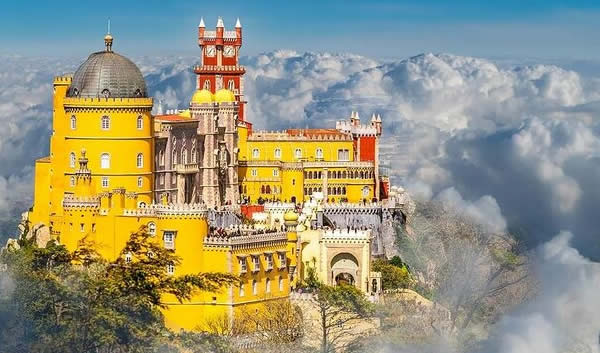
Perhaps the most iconic landmark in Sintra, the Pena Palace sits atop a hill in the Sintra Mountains, visible from miles away thanks to its vivid red, yellow, and purple façades.
History and Architecture
Commissioned by King Ferdinand II in the mid-19th century, the palace was built on the ruins of a former monastery. Inspired by Romantic ideals, Ferdinand combined architectural elements from Neo-Gothic, Neo-Manueline, Islamic, and Renaissance styles. The result is a whimsical palace that resembles something out of a fairy tale.
Visitor Experience
Inside, the palace is just as impressive, with ornate rooms, antique furnishings, and beautiful tile work. Surrounding the palace is the Pena Park, a sprawling botanical garden featuring exotic plants, winding paths, and tranquil lakes. Visitors often spend hours exploring both the palace and the extensive grounds.
2. Castle of the Moors (Castelo dos Mouros)
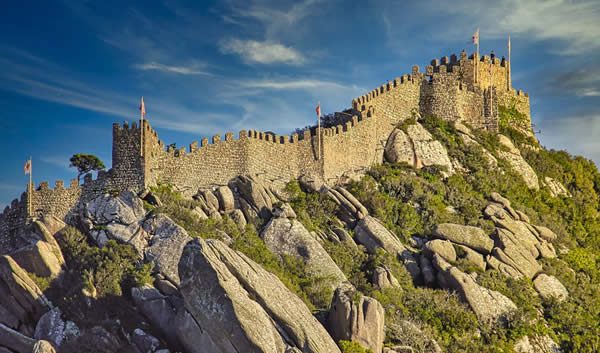
Just a short walk from Pena Palace, the Castle of the Moors offers a completely different experience — one rooted in medieval history and military strategy.
Historical Significance
Built during the 8th and 9th centuries by the Moors (Muslim inhabitants of the Iberian Peninsula), the castle was strategically positioned to defend the region. It was later taken by Christian forces during the Reconquista in the 12th century and has since become a symbol of Sintra’s layered past.
What to See
The ruins include fortified walls, lookout towers, and cisterns. The best part of the visit is walking along the ancient ramparts, which provide panoramic views of Sintra, the Pena Palace, and the Atlantic Ocean. The experience connects visitors directly with the region’s history and natural grandeur.
|
3. Quinta da Regaleira
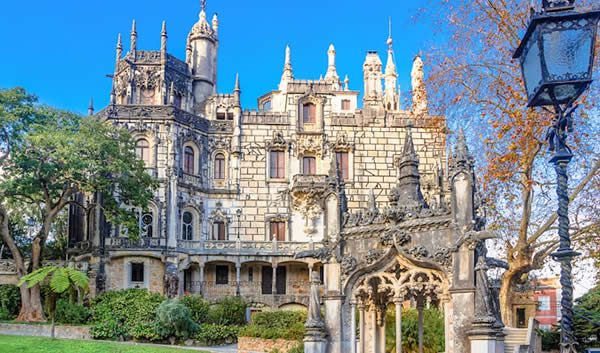
The Quinta da Regaleira is one of Sintra’s most mysterious and intriguing sites. Built in the early 20th century, this estate combines Gothic and Manueline architecture with esoteric symbolism and lush gardens.
Background
Owned and designed by António Augusto Carvalho Monteiro, a wealthy Brazilian-Portuguese businessman, and Luigi Manini, an Italian architect, the estate reflects a fascination with mysticism, the occult, and secret societies such as the Freemasons and the Rosicrucians.
Main Attractions
The Initiation Well is the estate’s most famous feature — a spiral staircase that descends deep into the earth, believed to symbolize rebirth or initiation into a secret order. The gardens are filled with tunnels, grottoes, towers, and hidden pathways. Every element seems to have a deeper meaning, making the estate a place of both visual and intellectual exploration.
4. National Palace of Sintra (Palácio Nacional de Sintra)
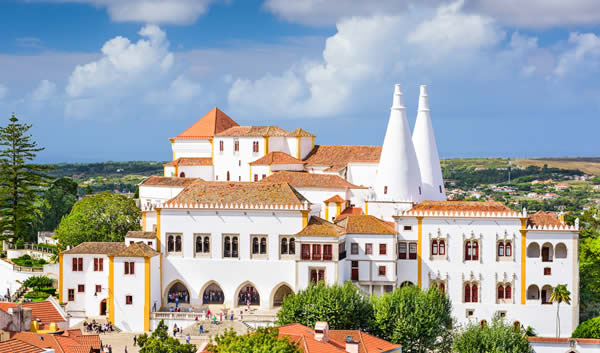
Located in the heart of the old town, the National Palace of Sintra is easily recognized by its two large white conical chimneys.
History
The palace dates back to the Moorish occupation but was extensively modified by various Portuguese monarchs, especially during the reigns of King John I and King Manuel I. It served as a royal residence for nearly 800 years.
Interior Highlights
The palace is known for its ornate interior, including the Swan Room, Magpie Room, and Coat of Arms Room — each filled with symbolic decorations, intricate tile work, and royal emblems. It offers a fascinating glimpse into Portuguese royal life and architectural evolution from the Middle Ages through the Renaissance.
Read Also
The Best Viewpoints in Lisbon, the Best Views of Lisbon
What to See and Do in Lisbon Ultimate Travel Guide
How to Visit Almourol Castle: A Complete Guide
5. Monserrate Palace (Palácio de Monserrate)
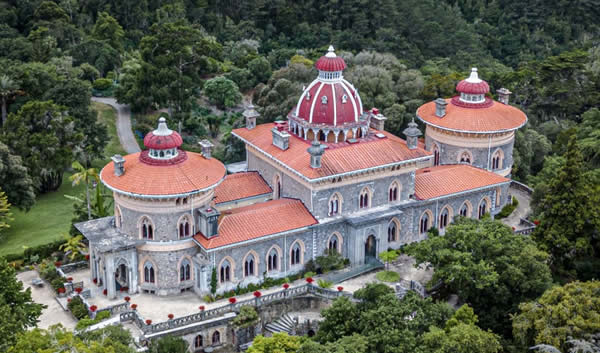
Often overshadowed by the more famous palaces, the Monserrate Palace is a hidden gem with exotic beauty and romantic flair.
Design and Influence
Rebuilt in the 19th century by Sir Francis Cook, a British millionaire and art collector, the palace is a masterpiece of Romanticism. It fuses Gothic, Moorish, and Indian architectural elements, creating a harmonious and visually stunning building.
The Gardens
Monserrate is surrounded by one of the most beautiful botanical gardens in Portugal, featuring over 3,000 species of plants from around the world. Curving paths lead visitors through themed gardens such as the Mexican Garden, the Rose Garden, and a fern valley. The tranquil setting is perfect for a relaxing stroll and quiet reflection.
6. Chalet of the Countess of Edla (Chalet da Condessa d’Edla)

Hidden within the Pena Park, the Chalet of the Countess of Edla was built in the 1860s by King Ferdinand II for his second wife, Elise Hensler, a Swiss-born opera singer.
Alpine Inspiration
The chalet is designed in the style of Swiss alpine houses, featuring wood carvings, cork elements, and painted decorations. It served as a private retreat for the couple and reflects their romantic and artistic sensibilities.
Restoration
After being damaged by fire in the 1990s, the chalet underwent a meticulous restoration and is now open to the public. Its charming architecture and serene gardens make it a delightful stop within the Pena estate.
7. Convent of the Capuchos (Convento dos Capuchos)
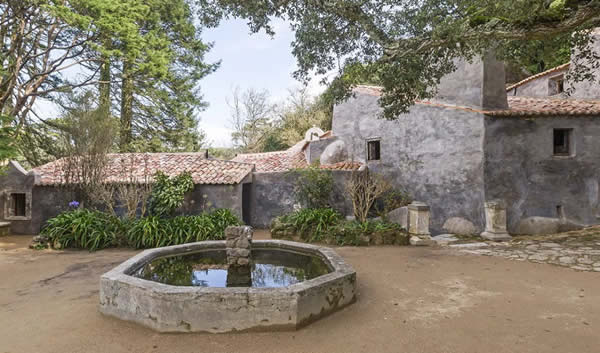
For those seeking a more spiritual and minimalist experience, the Convent of the Capuchos offers a stark contrast to Sintra’s opulent palaces.
Simple Living
Founded in 1560 by monks of the Franciscan order, the convent is built directly into the granite rocks of the Sintra Mountains and is covered in cork for insulation. It exemplifies the ideals of humility, isolation, and communion with nature.
A Sacred Space
Visitors can walk through tiny, dimly lit cells, chapels, and corridors that reflect the austere lifestyle of the monks. The surrounding forest and silence add to the peaceful and contemplative atmosphere.
8. Historic Center of Sintra

The historic town center of Sintra is as charming as its monuments. Cobbled streets, colorful buildings, and a backdrop of green hills make it an ideal place to wander.
Local Culture
The center is full of traditional pastry shops, artisan boutiques, and local restaurants. It’s the perfect place to try Sintra’s famous sweets, including travesseiros (flaky almond-filled pastries) and queijadas (cheese tarts).
Cultural Events
Throughout the year, Sintra hosts various cultural events, markets, and music festivals that celebrate its rich heritage and vibrant community life.
9. Seteais Palace (Palácio de Seteais)

Now operating as a luxury hotel, the Seteais Palace is a neoclassical mansion built in the 18th century for a Dutch consul.
Elegance and Views
With its grand archway and manicured gardens, the palace offers sweeping views of the Sintra hills, including the Pena Palace in the distance. Even if you don’t stay overnight, you can enjoy tea on the terrace or explore the grounds.
10. Sintra-Cascais Natural Park & Cabo da Roca
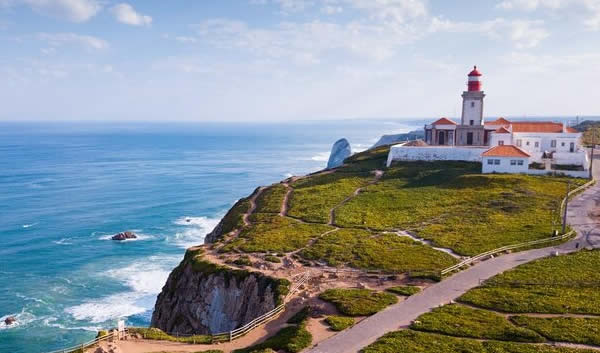
Beyond the town itself, the Sintra-Cascais Natural Park offers dramatic landscapes that stretch all the way to the Atlantic coast.
Cabo da Roca
One of the park’s most visited spots is Cabo da Roca, the westernmost point of mainland Europe. Marked by a lighthouse and a stone monument, the cliffside offers breathtaking ocean views and poetic solitude.
Outdoor Activities
The park is ideal for hiking, cycling, and birdwatching, with many scenic trails winding through forests, hills, and coastal cliffs. The diversity of flora and fauna adds to the natural beauty of the region.
|
11. Queluz National Palace (Palácio Nacional de Queluz)
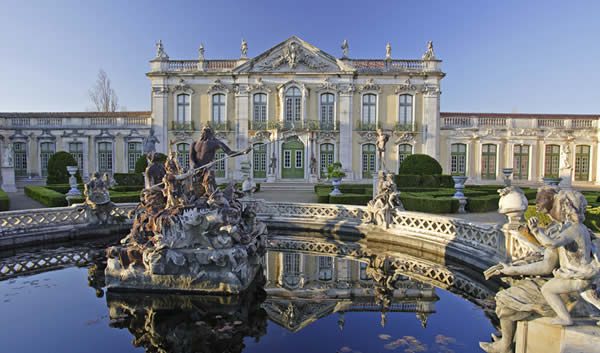
Though not located directly in Sintra, the Queluz Palace is often included in Sintra-area tours due to its proximity and historical significance.
Portuguese Versailles
Often called the “Portuguese Versailles,” this 18th-century palace showcases extravagant Rococo and Neoclassical architecture. It served as the official residence of the royal family and was the birthplace of Dom Pedro IV of Portugal, also known as Pedro I of Brazil.
Gardens and Interiors
The gardens are meticulously landscaped, featuring fountains, statues, and canals. The interior includes the Throne Room, Music Room, and royal apartments, all filled with ornate details.
Conclusion
Sintra is not just a town — it is an experience. Whether you are drawn by its mystical gardens, historical palaces, or dramatic landscapes, Sintra offers a rich and diverse array of attractions that appeal to every type of traveler.
From the colorful towers of Pena Palace to the meditative silence of the Convent of the Capuchos, from the mystery of Regaleira’s underground tunnels to the ocean vistas at Cabo da Roca, every corner of Sintra tells a story. It is a place where myth, history, and nature intertwine in perfect harmony.
Whether you spend a single day or an entire week exploring this magical town, Sintra is sure to leave a lasting impression — one of wonder, beauty, and timeless allure.


